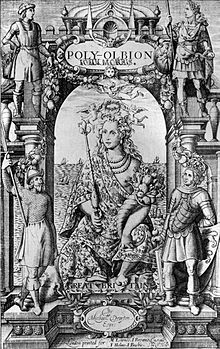Writing Britain: Wastelands to Wonderlands
As the world’s attention turns to the Olympics being held this summer in London, Writing Britain: Wastelands to Wonderlands explores treasures from the last 1000 years of English literature that have been shaped by the country’s unique spaces and places. From idyllic rural landscapes to gritty cities, the exhibition will showcase a literary map of the British Isles and highlight how writers, from William Shakespeare and Walter Scott to John Lennon and J K Rowling, have recorded the changing spaces of the British Isles in some of their greatest literary works, and in turn inspired their readers to explore the country in new ways. 
Curated by the British Library’s English and Drama team, the exhibition will feature over 150 literary works, including first-time loans from overseas and personal loans from modern authors, such as Posy Simmonds, Jonathan Coe, Hanif Kureishi, and J K Rowling.
Sound recordings, letters, photographs, maps, song lyrics and drawings as well as manuscripts and printed editions will feature alongside newly commissioned video interviews on location with literary figures including Simon Armitage, Andrea Levy and Ian McEwan.
Highlights of the exhibition include:
- J K Rowling, Harry Potter and the Philosopher’s Stone – the original manuscript for Harry Potter and the Philosopher’s Stone, lent by the author, describes Harry Potter’s first encounter with platform 9 ¾ in London’s King’s Cross station. Carefully avoiding the stopping trains via Cuffley and Bayford (strictly for Muggles only), he should pass between Platforms 9 and 10 to reach a magical passage to a fantastic parallel world. This manuscript is part of the exhibition’s ‘Cockney Visions’ section, looking at literature inspired by London.
- John Lennon’s original draft for ‘In My Life’ – John Lennon’s original handwritten lyrics to ‘In My Life’ describe the bus journey from Lennon’s childhood home to Liverpool’s town centre, recording many landmarks passed en route. The final version of the song, which appeared on The Beatles album Rubber Soul (1965), became a general meditation on the past. The draft lyrics are included in the exhibition’s ‘Dark Satanic Mills’ section focusing on industrial and urban areas.
- Virginia Woolf, first edition of To the Lighthouse (1927) and childhood newspaper, ‘Hyde Park Gate News’ – Woolf’s modernist novel tells the story of the Ramsay family and their visits to a remote island in the Hebrides. While the novel describes a visit to the Hebrides, an edition of ‘Hyde Park Gate News’, the childhood newspaper produced by Woolf and her siblings, shows the inspiration was in fact a family trip to the Godrevy lighthouse of St Ives. This printed book and manuscript are featured in the ‘Waterlands’ section of the exhibition.
More Articles
- National Archives Records Lay Foundation for Killers of the Flower Moon: The Osage Murders and the Birth of the FBI
- Nichola D. Gutgold - The Most Private Roosevelt Makes a Significant Public Contribution: Ethel Carow Roosevelt Derby
- Oppenheimer: July 28 UC Berkeley Panel Discussion Focuses On The Man Behind The Movie
- The Beige Book Summary of Commentary on Current Economic Conditions By Federal Reserve District Wednesday November 30, 2022
- A la Frank Sinatra: "Come Fly With Me", U.S. Department of Transportation Airline Customer Service Dashboard
- "Henry Ford Innovation Nation", a Favorite Television Show
- Julia Sneden Wrote: Going Forth On the Fourth After Strict Blackout Conditions and Requisitioned Gunpowder Had Been the Law
- Jo Freeman Reviews: Gendered Citizenship: The Original Conflict Over the Equal Rights Amendment, 1920 – 1963
- Dereliction of Duty: Examining the Inspector General’s Report on the FBI’s Handling of the Larry Nassar Investigation
- Adrienne G. Cannon Writes: Those Lonely Days






